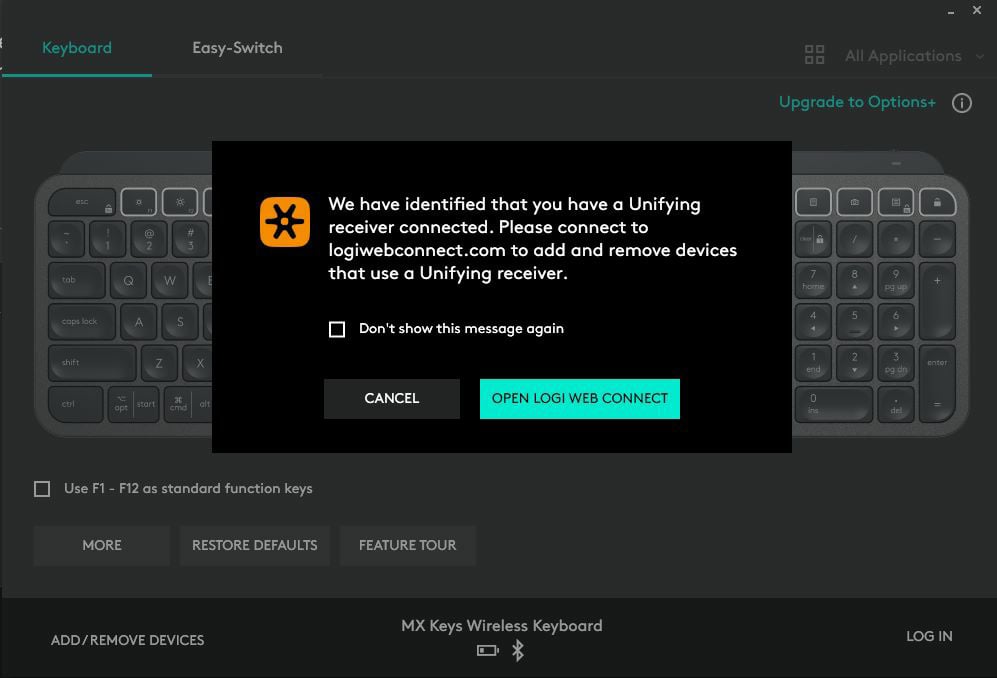As if it wasn’t bad enough that they want me to use a random internet service to add a keyboard to a usb wifi receiver, they have the balls to put this for Firefox users. I clicked out of pure curiosity, as I’m not even remotely interested in involving a corporate internet service in getting my keyboard connected to my computer. This is the message you get now on Logi Options software if you have a Unifying Receiver: 
For the curious: https://logiwebconnect.com
EDIT: some people on the thread have brought up that the error message being displayed for Firefox users is due to the WebUSB API not being implemented by Firefox due to security concerns. This still does not justify having to use a web app to plug peripherals to a PC.


https://webaim.org/blog/user-agent-string-history/
This site best viewed at 800x600 on Netscape Navigator
I remember upgrading to 800x600. I was stuck on 640x480 for a long time.
The real game changer was going from 256 colors to 16 bit. The jump to 24 bit/true color after that wasn’t as huge.
Yes!! The 640x480 screen I mentioned only supported 16 colours. 256 was supposed to work, but trying to change it to 256 would just cause the entire display to become corrupted. I tried multiple drivers and multiple refresh rates, but nothing worked. Maybe my S3 Trio3D was faulty.
Upgrading from that to 800x600 with 16 bit colour was such an amazing improvement.
Maybe, just maybe there should be an universal standard of how internet communication looks like, and the user agent shouldn’t matter one bit.